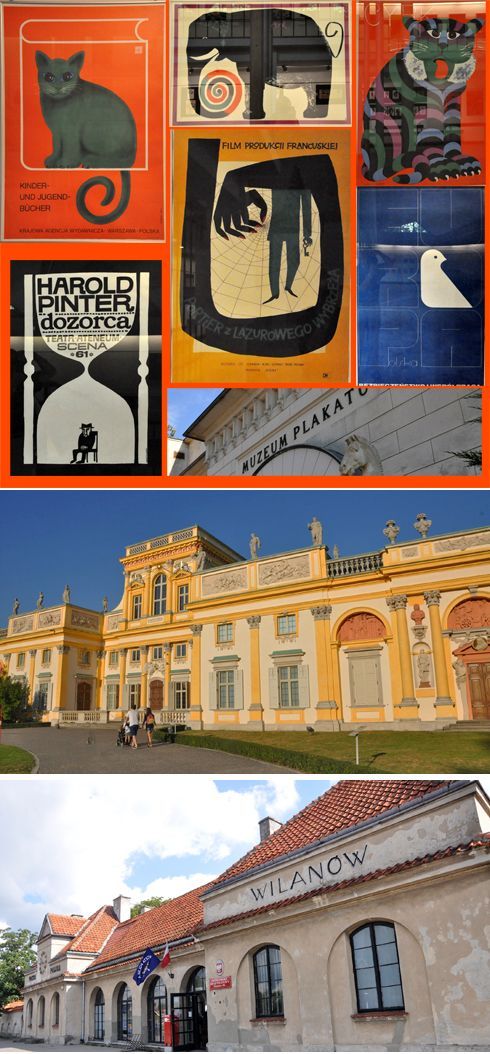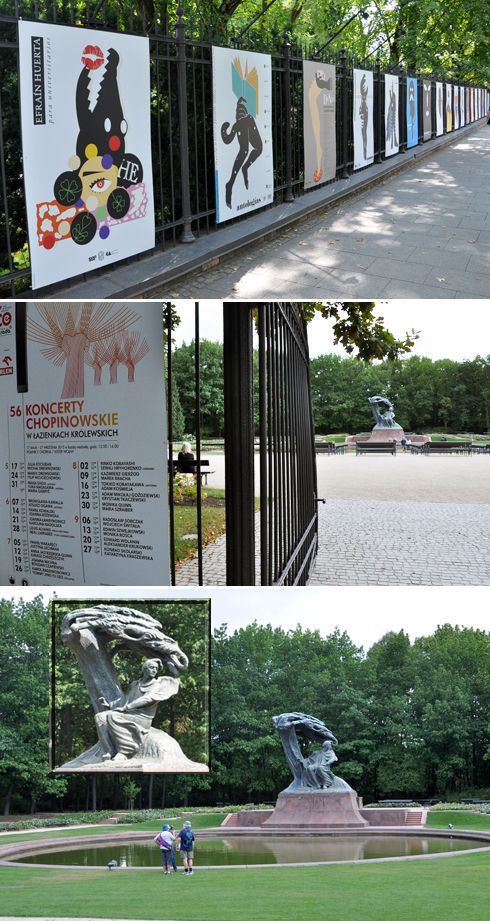Article
A Lot of Polish History in a Few of Warsaw's Museums
Author(s):
Warsaw's many museums explore a mix of the country's old and more recent history. A favorite is the Marie Curie museum.
Some of the Warsaw information here is thanks to the guide book Warsaw inyourpocket which is available for free on the counter of most city hotels. It is edited every two months by Thymn Chase, so it is fresh and it brings an engaging, sometimes whimsical, tone of not being printed just to direct you to any shop or any hotel. It speaks its mind. Here, for example, is part of what it has to say about the Palace of Culture and Science: “You couldn’t miss this hulking giant of a landmark if you tried…one of the most notorious examples of Socialist Realist architecture in the world…. Given that the building boasts over 3,300 rooms there is not a lot to see.”
And the guide goes on about the Technology section: “The building needs a map. Laid out by somebody with a sadistic sense of humor, the scores of rooms...are organized with what appears to be a contemptuous disregard for reason and logic...yet it’s a strangely rewarding experience.” This guide book does, however, say the view from the top is worth the ticket for the ride to the 30th floor in the old-style elevator.

The view from the top. Medals from one of the uniforms. Cars from those on display include a 1903 Samochod Cottereau, a 1935 Polski Fiat 508 Junak and a Ford Model T.
Built with 40 million bricks by 5,000 prisoners from the Soviet states (with 16 deaths) it took only three years to rise its 770 feet, a height that enables it to be seen from anywhere in the city and from distances as far away, apparently, as 18 miles. The Soviets claim it was based on the Empire State Building.
We had read that, under communism, political or Polish nationalistic art was banned (in the same way that Islamic art forbids faces and allows only geometric shapes) and that as a consequence, poster art flourished in Soviet-controlled Poland. Some artists apparently felt they could show Polish nationalistic pride in posters and get away with it. Indeed our favorite inyourpocket guide book states “two large halls full of ... over 55,000 pieces….” But we regretted slipping away from the Insight Vacations excursion to the Wilanow Palace next door when later our other group members described the gorgeous interiors at the time when we were looking at a sparse collection of posters with no explanations we could see in English, and with no way we could easily get rid of reflections in our images.

Poster museum. Wilanow Palace in the setting sun. Old railway station at Wilanow.

Afterwards when the Insight guide took us into Lazienski Park to have our Insight Vacations group photograph under the Chopin Monument, she pointed out the posters on the fence and, grinning, said, “You could have got all the poster photographs you needed here on the fence — and with no glass reflections!” Ouch. News travels fast in groups.
Fryderyk Chopin was born.in 1810 about 30 miles west of Warsaw in the Duchy of Warsaw at a time when this European state created by Napoleon was having regional wars that muddled whether its identity was French, Prussian, or ultimately Polish. Different cultures thus claimed Chopin but who could doubt this child prodigy was Polish? Some claim the Nazis took away every bit of Chopin memorabilia they could find, yet the museum created in 2010, 200 years after his birth, is a high-tech marvel on four floors of the Ostrogski Palace. It has 5,000 exhibits many of whose significance might require a fastidious interest beyond that of the typical tourist.

The Ostrogski Palace (above) has been the home for a Polish prince, a student hostel, a military hospital, a saloon and finally rebuilt after Nazi destruction to house the Fryderyk Chopin Society. It has a replica of his Paris drawing room, a collection of priceless autographed sheets of his compositions demonstrated to us by a delightful young assistant, a gold watch gift to him when he was ten years old, and an early portrait of the young man.

A painting of “Chopin’s last chords,” of his death scene, of his death mask, and a cast of one of those spectacular hands, and, downstairs in the interactive area, one of the desks where visitors can sit down and select a piece of Chopin museum and have it performed on a modern type of compact player piano all can provide hours to interest the curious.

The National Museum comes as a surprise. Huge but comfortably laid out, some of its permanent collection of Old European Masters can now be seen despite the ongoing renovation of what has at last given a splendid site to this museum. At the time of our visit and on show till December was a terrific exhibition, On the Art of War in Ancient Greece.
When the Ancient Art Gallery opens the display can be seen there. The exhibition shows how the heavily armored infantry formation, the phalanx, created an invincible infantry unsurpassed in its time. An explanation can be seen here at this time. A display of helmets shows how huge the shields were that comprised the phalanx. We were intrigued to see how more attentive to the exhibits was a young girl compared to an adult at the entrance on this very hot October day.
Some museums in Warsaw we discovered by chance, but one that determined our wish to come to Warsaw was the one which offered the chance to learn more and show our respect to Marie Curie, who was born Marie Sklodowska in 1867 in this city. With her husband Pierre Curie in Paris she isolated polonium, named for her country, then discovered radium with all its medical benefits. She shared the Nobel Prize for Physics in 1903 with her husband, the first woman to receive the Nobel Prize. Incredibly she was awarded the Nobel Prize for Chemistry in 1911. As if that wasn’t extraordinary enough, her elder daughter, Irene, and Irene’s husband were awarded the Nobel Prize for Chemistry in 1935. To complete this story we should add her younger daughter married an American diplomat, H.R. Labouisse who, as Director of the United Nations’ Childrens’ Fund, received the Nobel Peace Prize in Oslo in 1965.
The side effects of radioactivity were not known at that time and Marie died in 1934 of aplastic anemia. She is the only woman who has been awarded the Nobel Prize twice. Despite all this she was a most modest woman and, after her death, her friend Albert Einstein said, “She was the only person, not spoiled by fame, among those” he had ever met.

The Marie Curie Museum, “situated a test tube's throw from her birth place,” says the Lonely Planet, is easily found north of Old Town once you get though the Barbican Gate. The museum has the medal she was awarded by UNESCO — and photographs and busts of her and husband Pierre, and her very sink brought from her lab in Paris.

A painting of the Discovery of Radium by Teodozja Czeladka Mtynarska and the exterior of her building on the street in Warsaw, Fleta 5.

Last photo in Paris, one of her black dresses. Her chemistry student book, her diploma in science and a learned book she wrote on Radiation and War.
Marie Curie was 66, old by the standards of 1934 when she died, but she had some sensible advice for people older in the world of today. ”Nothing in life,” she said. “is to be feared; it is only to be understood."
Photography by the authors
The Andersons, who live in San Diego, are the resident travel & cruise columnists for Physician's Money Digest. Nancy is a former nursing educator, Eric a retired MD. The one-time president of the New Hampshire Academy of Family Physicians, Eric is the only physician in the Society of American Travel Writers. He has also written five books, the last called The Man Who Cried Orange: Stories from a Doctor's Life.




